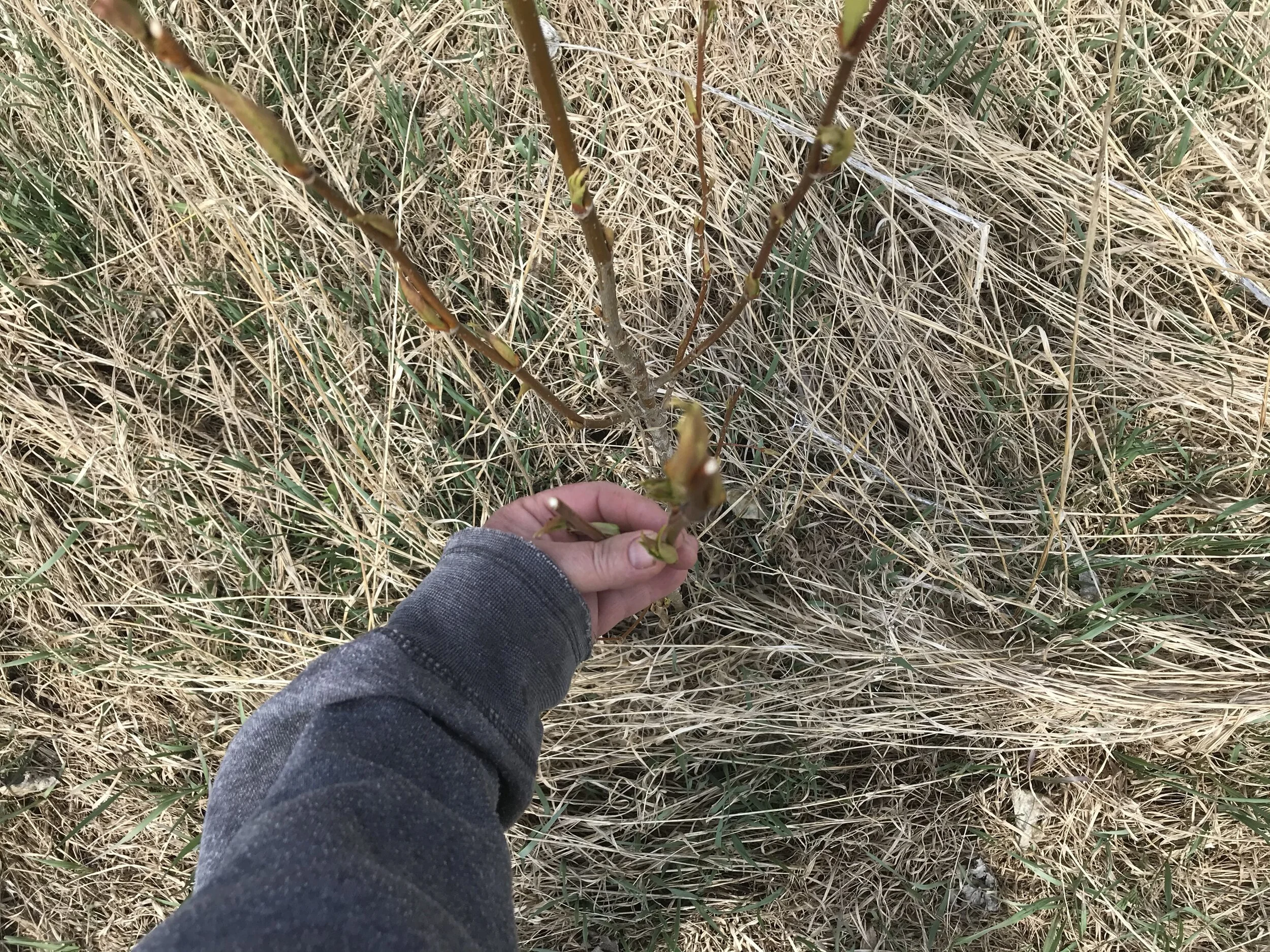SHO FARM: How to Work With Time, Native Flora, and Natural Succession to Build Food Systems
I'm standing in the middle of a small stand of poplar saplings that sprouted in one of our pastures. You can see that the un-mown grasses have created a mulch, as well as the conditions for mycelial networks that favor trees. Look at the soil crumb of the undisturbed understory.
Look at the deer browse on the tips of some of the branches:
As we practice agroforestry, planting trees for human food into this set of conditions is IDEAL...One would simply cut some of the saplings and lay them down as nutrient-rich mulch, and keep some to act as nurse trees for newly-planted apple or nut trees (for example).
The benefits here are multiple:
1) No need to till the soil
2) Reduced grass and weed competition in the establishment of trees
3) Wind protection for the newly-planted trees provided by the remaining saplings
4) Trap crops for the deer to browse, thus diverting their attention from transplanted trees
5) Opportunity for the collection of manures left by browsing deer
6) Shrubby habitat for birds like turkey and grouse
7) Low cost of establishment, and no need to purchase mulch, distribute materials (ie fertility grown in place), and likely less time for productive tree establishment due to the presence of a healthy and undisturbed mycelial network
8) Carbon sequestration with low-to-no carbon expenditure (ie methane produced by livestock, or no human labor)
9) Growing mulch materials in place, thus accelerating the capacity to hold more carbon, more fungal networks, more nutrients in the system
Food systems and land stewardship will, by necessity, require the restoration of wildlife habitat, lest we lose the native flora and fauna that falls all too often at the hands of human agriculture and development. Livestock grazing dis-favors grassland bird, pollinator, and wildlife habitat, and costs the missed opportunity of restoring perennial, carbon-sequestering, resilient tree-based agricultural systems where they would naturally thrive.
This is but one way to partner with the power of living ecosystems in meeting human AND animal needs.
—Melissa Hoffman, LivingFuture Foundation



